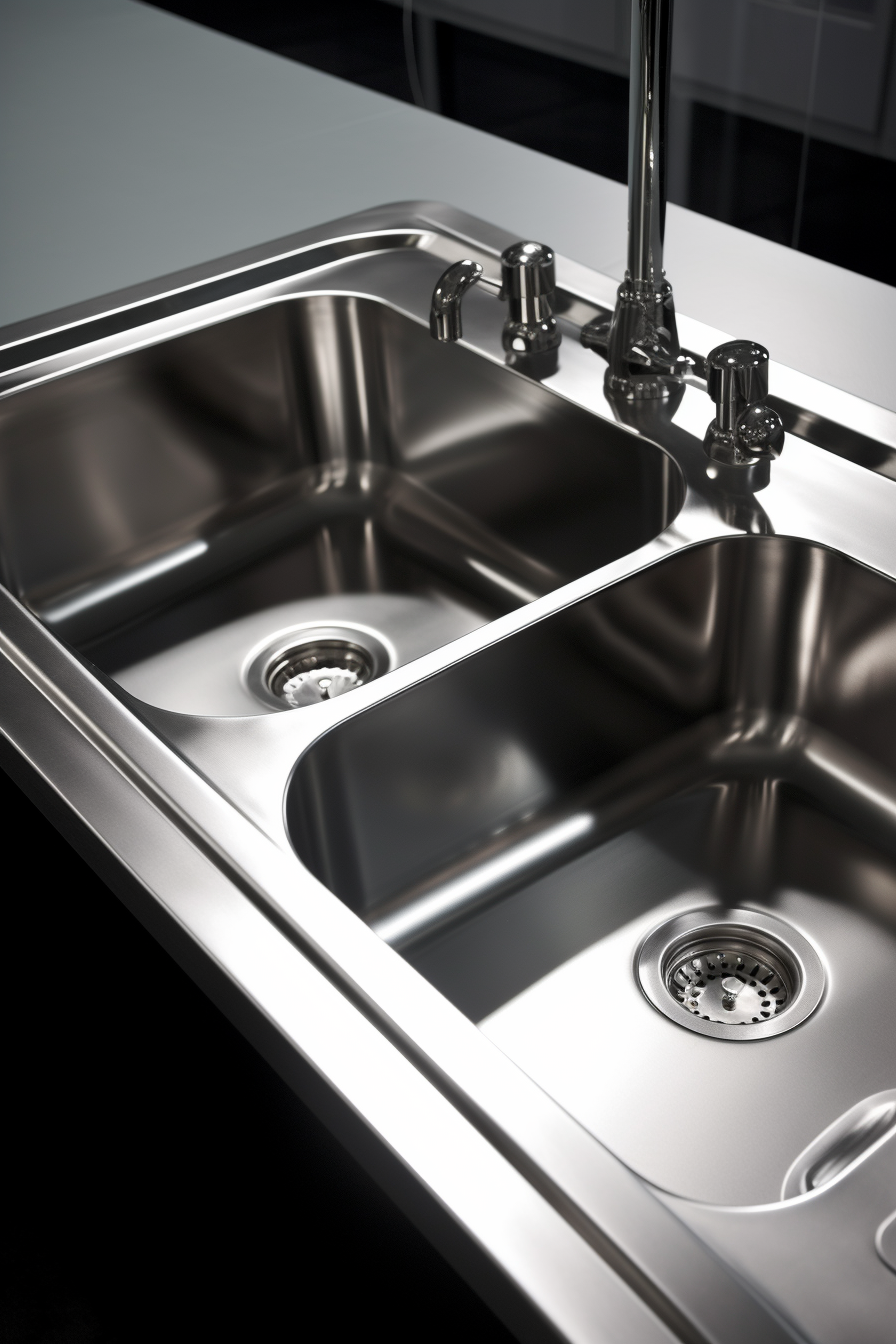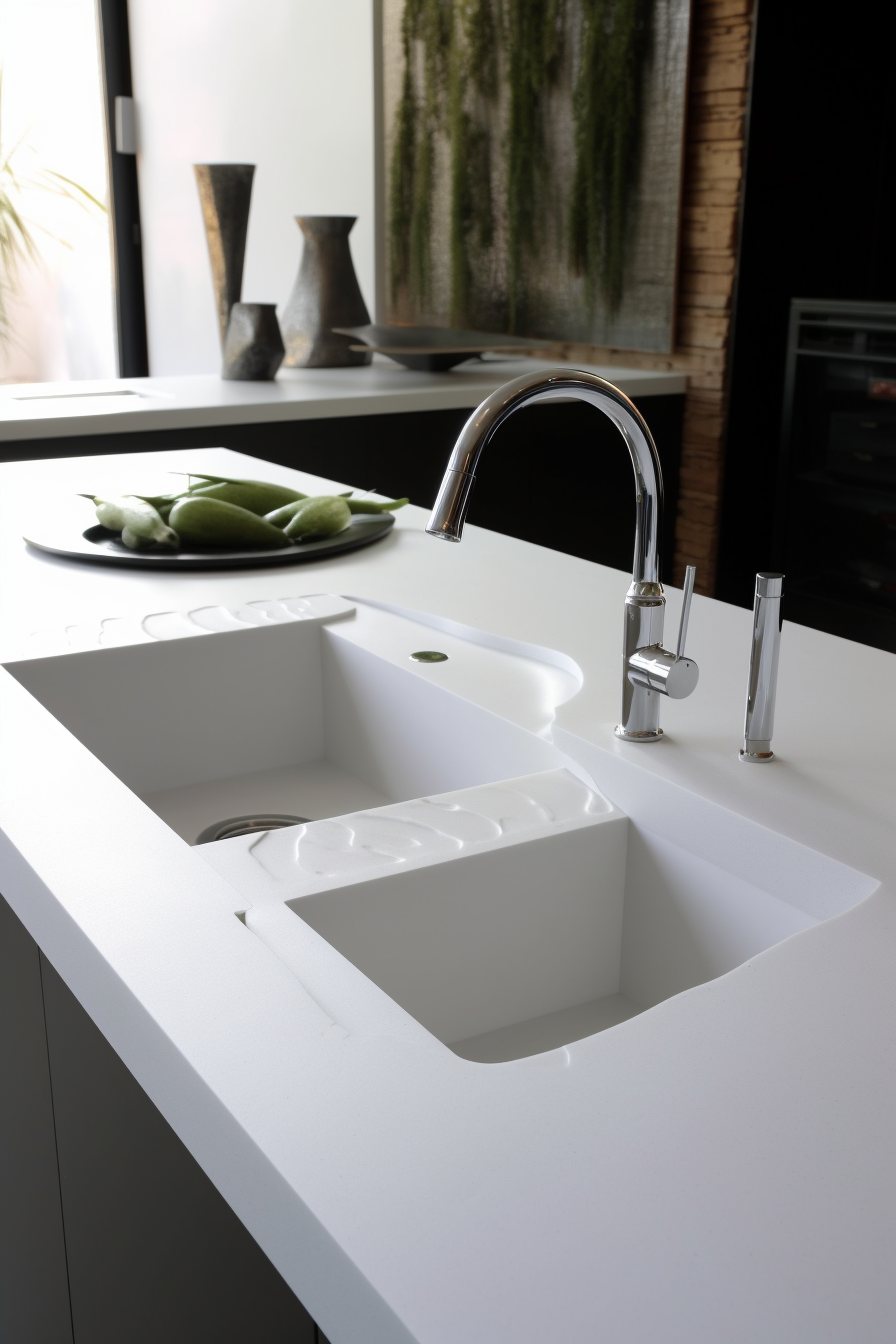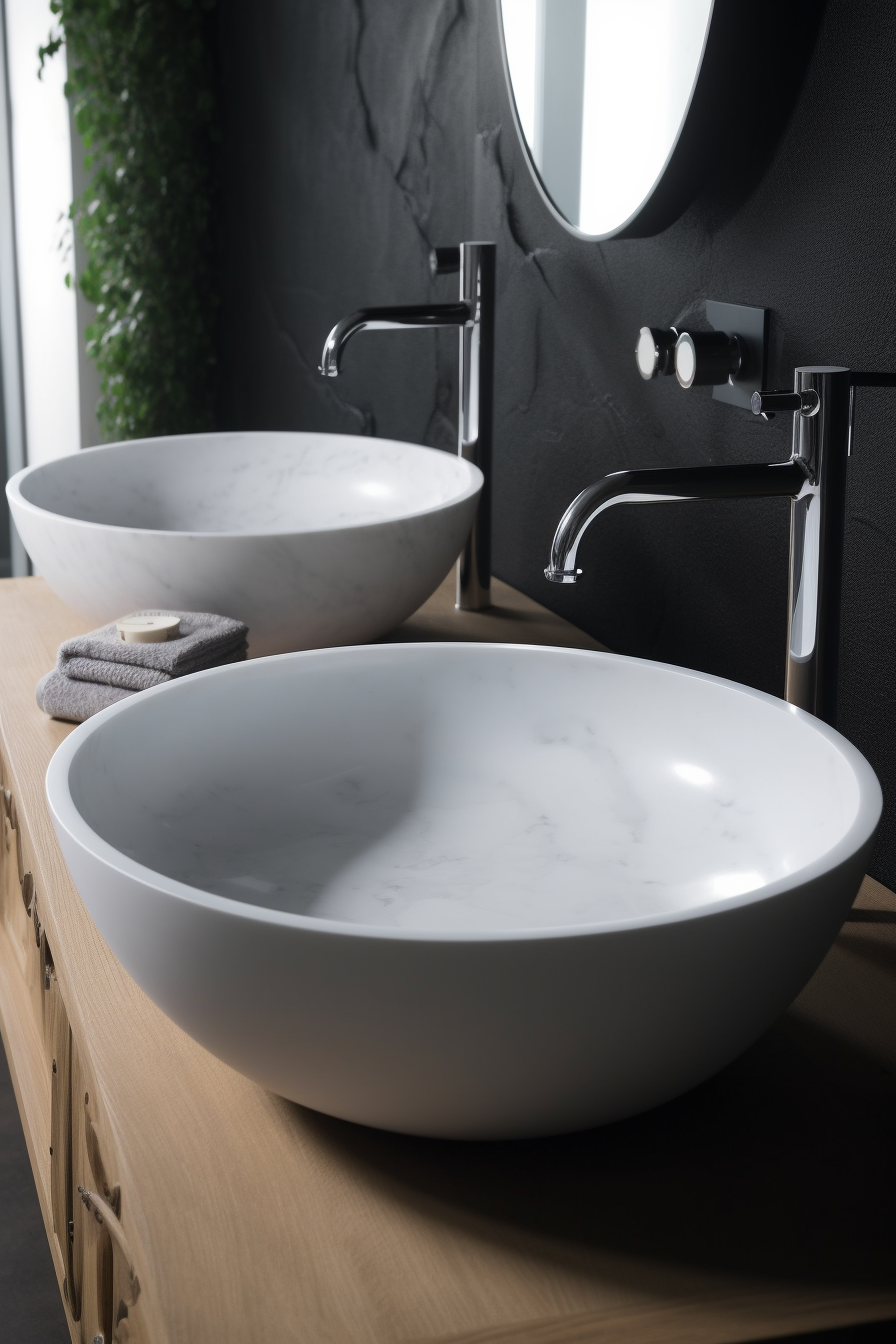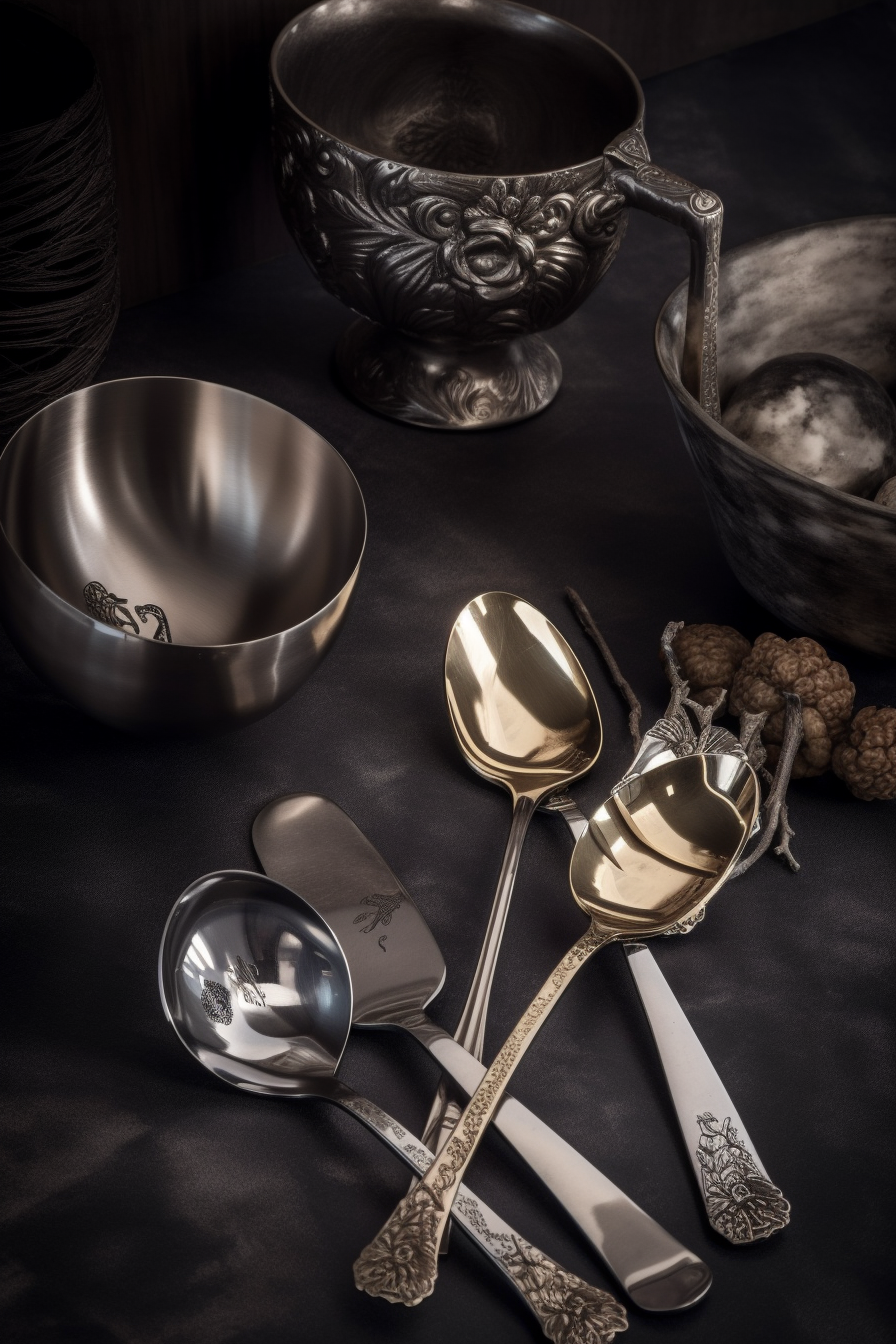Kashering/Preparing Kitchen Sinks for Use on Pesach
Sinks are generally made from either stainless steel, granite composite, china, porcelain enamel, or manufactured materials such as Corian.
Stainless Steel Sinks

It can be kashered using iruy roschin, as follows: Clean the sink thoroughly. Hot water should not be used or poured into the sink for 24 hours before kashering. It is recommended that the hot shut-off valve under the sink be turned off 24 hours before kashering. The sink should be dry before kashering. Kashering is accomplished by pouring boiling hot water from a Pesach kettle/pot over every part of the stainless steel sink.
TIP: The pouring surface is much broader than a kettle spout if a roasting pan is filled and heated. It is insufficient to pour water on one spot and let it run down the sink. The poured water must touch every part of the sink, including the drain and the water faucet spout. The kashering kettle will likely need to be refilled a few times before kashering can be completed. After kashering, the sink should be rinsed with cold water. If hot water was accidentally used in the sink during the 24-hour dormant period, and there is not enough time before Pesach to leave the dormant for an additional 24 hours, a Shaila should be asked.
China Sinks
These sinks cannot be kashered and should be cleaned, not used for 24 hours, and completely lined with contact paper or foil. The dishes to be washed should not be placed directly into the sink. They must be washed in a Pesach dishpan on a Pesach rack. It is necessary to have separate dish pans and shelves for milchig and fleishig dishes.
Porcelain, Corian, or Granite Composite Sinks

These sinks should also be considered similar to a china sink since there is a controversy about whether these materials can be kashered. Granite composite is a material fashioned from Granite and plastic. Many sinks that look like Granite are actually granite composite.
Countertops

Silestone, Porcelain Enamel, Corian, Quartz, Plastic/Formica, and Granite Composite countertops cannot be kashered; they should be cleaned and covered.
To place hot food and utensils on these countertops, cardboard or thick pads must cover the counter. Corian is also a form of plastic that cannot be kashered. Since the chometz penetrates only a thin layer of the counter, it can be sanded down to take off a layer of Corian (the thickness of a piece of paper) and is considered Kosher l’Pesach. However, only a qualified contractor should attempt this procedure.
Pure Granite (not granite composite), Marble, Stainless Steel, or Metal may be kashered through iruy roschin. Wood may also be kashered through iruy roschin if it has a smooth surface.
Iruy rochsin is accomplished by pouring boiling hot water over every part of the clean countertop. Actual water is needed to kasher, not steam. A steam machine may be used if it boils water and sprays it onto the countertops. However, suppose the steamer only produces steam and not actual boiling water. In that case, it can not be used to kasher, even if the steam is hotter than 212 degrees F. STAR-K has tested many commercially available steamers and found that almost all of them will only produce hot steam and not boiling water. One method of iruy rochsin is to spray or pour a small amount of hot water on the counter and then use a hot iron or heated cast iron plate on top of the water to [re-]boil it on contact. However, this is dangerous and should only be performed by competent individuals.
Kashering Metal Utensils

Metal utensils (e.g., stainless steel/cast iron/aluminum serve ware; silver/ pewter bechers/Kiddush cups) that have been used for cooking, serving, eating, or washing with hot chometz may be kashered. This may be done by cleaning the utensils thoroughly and waiting 24 hours before immersing them, one by one, into a Kosher for Pesach pot of water heated to a rolling boil. A rolling boil should be maintained while the vessel is immersed.
Note: Follow these steps with care! The metal utensil or vessel should be submerged in boiling water for about 15 seconds. The utensils undergoing the kashering process may not touch one another. In other words, if a set of flatware is being kashered for Pesach, one cannot put all the knives, forks, and spoons into the boiling water together. Each of these items should be placed into the boiling water separately.
KASHERING TIP
Loosely tie the pieces of silverware to a string, leaving three inches between each piece, and immerse the silverware string slowly, ensuring the water keeps boiling.
The process is finalized by rinsing the kashered items in cold water. If tongs are used to grip the utensil, the utensil will have to be immersed a second time with the tongs in a different position so that the boiling water will touch the initially gripped area. Unlike tevilas keilim, the entire utensil does not have to be immersed in the boiling water at once; it may be immersed in parts
A non-Kosher l’Pesach pot may also be used, l’Halacha, for kashering if it is clean and has not been used for 24 hours. However, it is customary to make the pot Kosher l’Pesach before using it for kashering. This is accomplished by cleaning the pot inside and out and leaving it dormant for 24 hours. The pot should be filled entirely with water and brought to a rolling boil. One should throw a hot stone or brick into a pot heated on another burner using a pair of tongs. The hot rock will cause the water to bubble more furiously and run over the top ridge of the pot on all sides at once. (One should use caution, as the hot water may spray in all directions.) The kashering process is finalized by rinsing the pot in cold water. The pot may now be refilled, brought to a boil, and used to kasher the chometz utensils. If it is intended for Pesach use, it is a minhag to re-kasher the pot after kashering.
Extra bonus: After this kashering process has taken place, the status of these newly kashered utensils may be changed from milchig to fleishig or vice versa, or pareve.
Towels, Tablecloths, etc. – Those used during the year with chometz may be used on Pesach if they have been laundered with soap and hot water, even if the stains do not come out. The same applies to potholders, bibs, and aprons. Synthetic material, such as rayon and Terylene, that can only withstand a warm water cycle may be used on Pesach after they have gone through a washing with detergent and only if there are no visible stains after they have been cleaned. Transparent printed vinyl tablecloths from Taiwan are coated with a powder and should be rinsed off before use. Regarding other tablecloths, see Pesach Product Directory Vases – Those used on the table during the year may be used on Pesach if they are washed inside and out.
Anchor Text: Pesach Product Directory
External Link: http://www.star-k.com/cons-pesach-notavail.htm
Follow these easy steps for prepping your kitchen sink for use on Pesach. Get efficient and thorough kashering that makes cleaning easier than ever before!
Recommend0 recommendationsPublished in Opinion
Responses